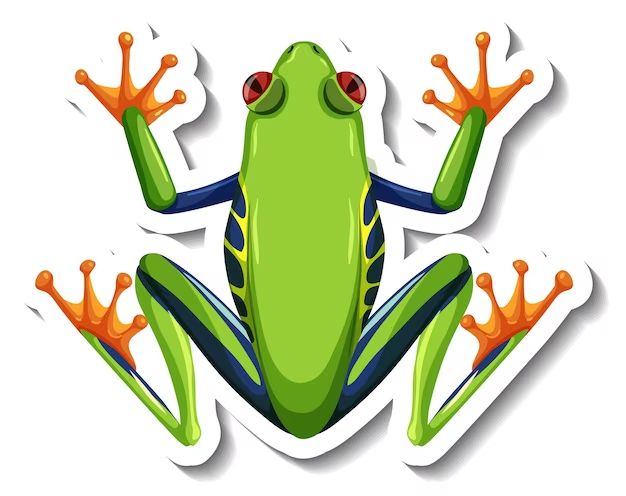Frogs exhibit a coloration pattern called countershading, where their backs are darker and their bellies are lighter. This helps camouflage them from predators and prey. There are several reasons why countershading is advantageous for frogs:
Camouflage
Countershading helps frogs blend into their surroundings by eliminating shadows and creating a flat appearance. When light hits an object, the top surfaces appear lighter and the bottom surfaces appear darker. This shading effect can make the object more visible. Countershading counters this by having the darker coloration on top and the lighter coloration on the bottom. This helps cancel out the shading and makes the frog harder to see.
Protection from predators
Countershading provides camouflage that helps protect frogs from predators like birds, snakes, and other animals that may eat them. When viewed from above, the dark back of a countershaded frog blends into the dark ground or water below. When viewed from below, the light belly blends into the bright sky or water surface above. This makes it difficult for predators to spot the frog.
Hunting ability
Countershading also helps frogs remain concealed from prey like insects and small fish. The camouflaging coloration allows frogs to blend into their surroundings, getting close enough to prey to strike successfully. This gives frogs an evolutionary advantage as effective hunters.
Thermoregulation
Having a lighter belly may also help with thermoregulation. The lighter coloration can reflect heat from the sun and cool the frog’s underside. Meanwhile, the darker back can absorb heat from the sun, helping regulate body temperature. This may provide an advantage in warmer environments.
Water reflection
For frogs living near the water, countershading produces camouflage related to water reflection. When viewed from below the water’s surface looking up, the light belly of the frog blends into the bright water surface. When viewed from above looking down into the water, the dark back blends into the dark water below.
Conclusion
In summary, countershading provides camouflage for frogs from both predators and prey. It also likely assists with thermoregulation. The evolutionary benefits of this coloration pattern explain why it has been adopted by so many species of frogs and other animals.
Examples of Countershaded Frogs
Here are some examples of frog species that exhibit countershading:
Green frog
The green frog has a greenish-brown back and a bright white belly.
Bullfrog
The bullfrog has an olive green back and pale yellow underside.
Red-eyed tree frog
This frog has a bright green back and a white belly.
Poison dart frog
Poison dart frogs have brightly colored backs with blue, yellow, red, etc. Their bellies are paler.
Wood frog
Wood frogs have a brown or bronzy back and a pale yellow-white underside.
How Countershading Works
Here is a more detailed look at how countershading camouflages frogs:
| View | Frog Appearance | Camouflage Effect |
|---|---|---|
| From above | Dark back blends into dark ground/water | Hard for predators to spot frog |
| From below | Light belly blends into bright sky/water surface | Hard for prey to spot frog |
| From the side | Graded color eliminates shading | No defined shape makes frog hard to detect |
As the table shows, countershading provides camouflage no matter what angle the frog is viewed from. This helps conceal it in diverse environments.
Other Countershaded Animals
In addition to frogs, many other animals exhibit countershading including:
- Fish like sharks and trout
- Mammals like deer and cougars
- Birds like quail and wild turkeys
- Reptiles like snakes and lizards
- Insects like caterpillars and grasshoppers
Any animal that needs camouflage from above and below can benefit from countershading. It is widespread in both predators and prey across many habitats.
Mimicry in Frogs
Some frogs use colors and patterns not for countershading but to mimic other animals. This can also provide survival advantages. Examples include:
Poison frog mimicry
Non-poisonous frogs may mimic the bright colors of poisonous frogs as a warning to predators.
Snake mimicry
Some frogs have patterns that mimic the appearance of snakes, scaring off potential predators.
Leaf mimicry
Frogs like tree frogs may have mottled green coloration that helps them blend in with leaves and avoid detection.
Conclusion
Countershading is an extremely common evolutionary adaptation in frogs that helps them survive. The graded coloration provides camouflage from above, below, and the side. It conceals frogs from predators and prey in diverse environments. Many other animals exhibit countershading as well. Unique color patterns on some frogs may also mimic other animals for defensive purposes. In general, the varied coloration of frogs plays an important role in their survival and fitness.


